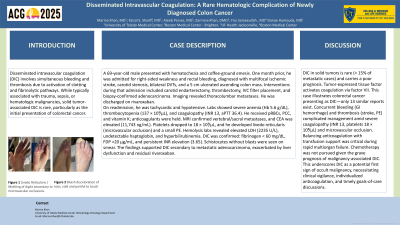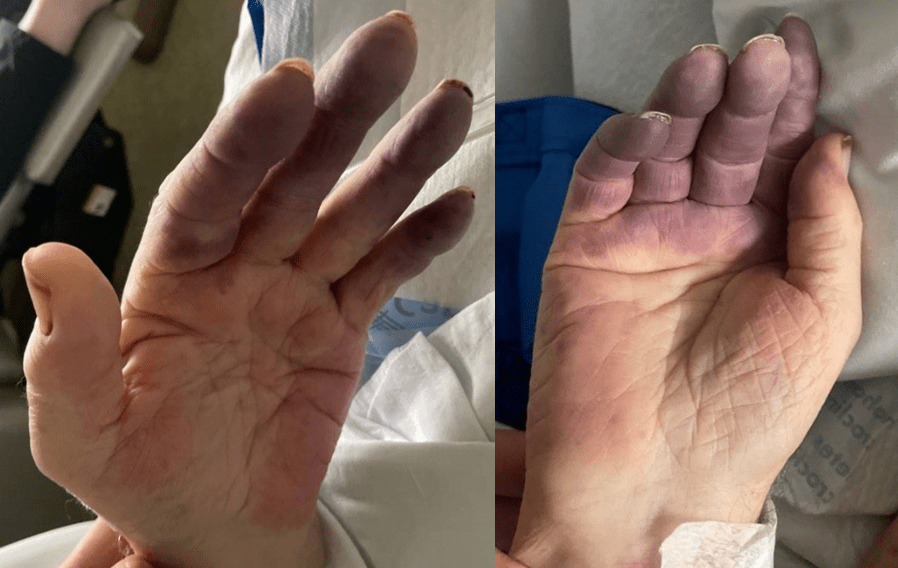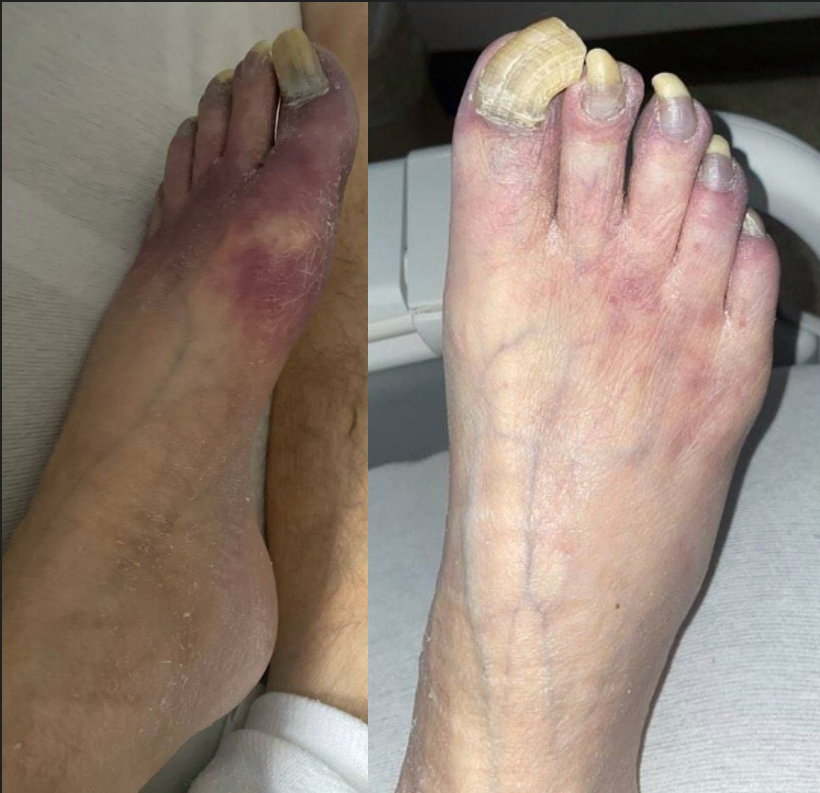Monday Poster Session
Category: Colon
P2592 - Disseminated Intravascular Coagulation: A Rare Hematologic Complication of Newly Diagnosed Colon Cancer


Marina Khan, MD
University of Toledo Medical Center
Toledo, OH
Presenting Author(s)
1University of Toledo Medical Center, Toledo, OH; 2University of Toledo Medical Center, Sylvania, OH; 3St. Elizabeth's Medical Center, Boston University School of Medicine, Quincy, MA; 4UF Health Jacksonville, Jacksonville, FL; 5Boston Medical Center, Boston University School of Medicine, Dorchester, MA; 6University of Toledo Medical Center, Hematology and Oncology fellowship Program Director, Toledo, OH
Introduction: Disseminated intravascular coagulation (DIC) involves simultaneous bleeding and thrombosis due to activation of clotting and fibrinolytic pathways. While typically associated with trauma, sepsis, or hematologic malignancies, solid tumor-associated DIC is rare, particularly as the initial presentation of colorectal cancer.
Case Description/Methods:
A 69-year-old male presented with hematochezia and coffee-ground emesis. One month prior, he was admitted for right-sided weakness and rectal bleeding, diagnosed with multifocal ischemic stroke, carotid stenosis, bilateral DVTs, and a 5 cm ulcerated ascending colon mass. Interventions during that admission included carotid endarterectomy, thrombectomy, IVC filter placement, and biopsy-confirmed adenocarcinoma. Imaging revealed thoracolumbar metastases. He was discharged on rivaroxaban.
On readmission, he was tachycardic and hypotensive. Labs showed severe anemia (Hb 5.6 g/dL), thrombocytopenia (137 × 10³/µL), and coagulopathy (INR 13, aPTT 36.4). He received pRBCs, PCC, and vitamin K; anticoagulants were held. MRI confirmed vertebral/sacral metastases, and CEA was elevated (11,743 ng/mL). Platelets dropped to 18 × 10³/µL, and he developed livedo reticularis (microvascular occlusion) and a small PE. Hemolysis labs revealed elevated LDH (2235 U/L), undetectable haptoglobin, and hyperbilirubinemia. DIC was confirmed: fibrinogen < 60 mg/dL, FDP >20 µg/mL, and persistent INR elevation (3.65). Schistocytes without blasts were seen on smear. The findings supported DIC secondary to metastatic adenocarcinoma, exacerbated by liver dysfunction and residual rivaroxaban.
Discussion:
DIC in solid tumors is rare (< 15% of metastatic cases) and carries a poor prognosis. Tumor-expressed tissue factor activates coagulation via factor VII. This case illustrates colorectal cancer presenting as DIC—only 13 similar reports exist. Concurrent bleeding (GI hemorrhage) and thrombosis (stroke, PE) complicated management amid severe coagulopathy (INR 13, platelets 18 × 10³/µL) and microvascular occlusion. Balancing anticoagulation with transfusion support was critical during rapid multiorgan failure. Chemotherapy was not pursued given the grave prognosis of malignancy-associated DIC. This underscores DIC as a potential first sign of occult malignancy, necessitating clinical vigilance, individualized anticoagulation, and timely goals-of-care discussions.


Disclosures:
Marina Khan, MD1, Faisal S. Shariff, MD2, Ateeb Parvez, MBBS3, Zarmina Khan, DMD4, Fnu Sameeullah, MD5, Danae Hamouda, MD6. P2592 - Disseminated Intravascular Coagulation: A Rare Hematologic Complication of Newly Diagnosed Colon Cancer, ACG 2025 Annual Scientific Meeting Abstracts. Phoenix, AZ: American College of Gastroenterology.
